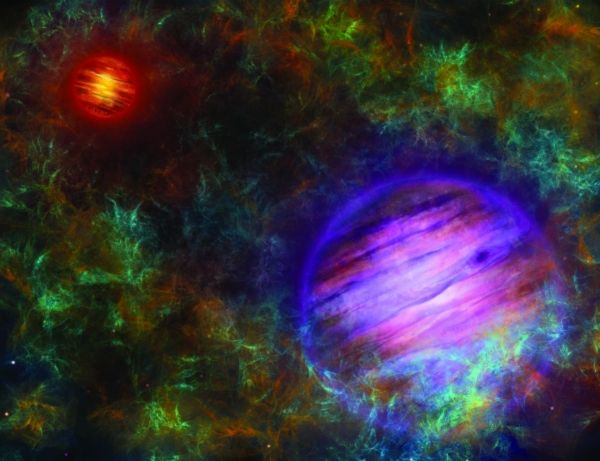An international research team led by the University of Bern has discovered an exotic binary system composed of two young planet-like objects, orbiting around each other from a very large distance. Although these objects look like giant exoplanets, they formed in the same way as stars, proving that the mechanisms driving star formation can produce rogue worlds in unusual systems deprived of a Sun.
Star-forming processes sometimes create mysterious astronomical objects called brown dwarfs, which are smaller and colder than stars, and can have masses and temperatures down to those of exoplanets in the most extreme cases. Just like stars, brown dwarfs often wander alone through space, but can also be seen in binary systems, where two brown dwarfs orbit one another and travel together in the galaxy.
Researchers led by Clémence Fontanive from the Center for Space and Habitability (CSH) and the NCCR PlanetS discovered a curious starless binary system of brown dwarfs. The system CFHTWIR-Oph 98 (or Oph 98 for short) consists of the two very low-mass objects Oph 98 A and Oph 98 B. It is located 450 light years away from Earth in the stellar association Ophiuchus. The researchers were surprised by the fact that Oph 98 A and B are orbiting each other from a strikingly large distance, about 5 times the distance between Pluto and the Sun, which corresponds to 200 times the distance between the Earth and the Sun. The study has just been published in The Astrophysical Journal Letters.
Read more at: University of Bern
Artist's composition of the two brown dwarfs, in the foreground Oph 98B in purple, in the background Oph 98A in red. Oph 98A is the more massive and therefore more luminous and hotter of the two. The two objects are surrounded by the molecular cloud in which they were formed. (Photo Credit: © University of Bern, Illustration: Thibaut Roger)


